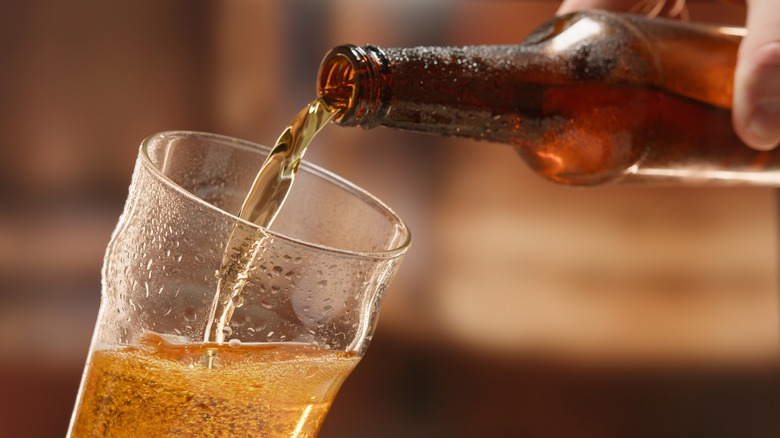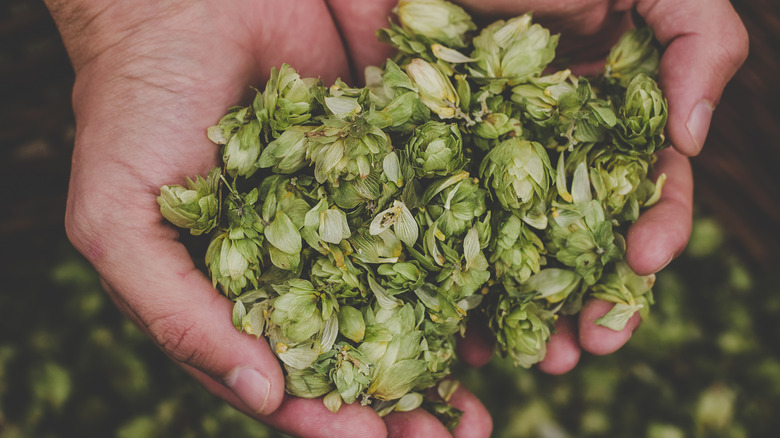What Exactly Is The IBU Scale For Beer?
Taste may be the most enigmatic of all the senses because it seems so subjective. We can easily measure the size of something we see, the weight of something we hold, and the volume of something we hear, but taste doesn't work on such a concrete level. Nevertheless, many people have endeavored to measure flavor in quantitative terms, and some have even found success. For example, take the Scoville scale, which quantifies the spiciness of chile peppers according to the concentration of a tongue-numbing chemical called capsaicin.
Other flavor scales may not be as well-known as the Scoville scale, but this is not for lack of trying. Per The Guardian, the Pyruvate scale aims to quantify the pungency of onions and garlic by measuring their respective concentrations of pyruvic acid, which is the very substance that brings tears to your eyes whenever you make a mirepoix. On top of that, Scientific American points out that one can reach an approximate measurement of the sourness of foods and beverages using the standard pH scale. But one flavor scale has made a big stir recently and seems capable of achieving the same notoriety as Scoville units, if not more, and that's the IBU scale.
The IBU measures bitterness
IBU stands for International Bitterness Units, a system of measurement that, true to its name, endeavors to quantify how bitter any given beer is (via MasterClass). The scale ranges from zero to 120 IBU, which is the threshold of bitterness that the human palate can detect. The technicalities of the scale are fairly straightforward. The hops used to make beer contain alpha acids that isomerize during the brewing process to become bitter-tasting compounds called isohumulones. The IBU scale measures the concentration of these acids in your beer. It's a convenient shorthand that breweries can use to tell you how bitter each of their offerings is, but you should probably take that information with a grain of salt.
The Denver Post reveals that the IBU scale can't accurately measure every type of beer, especially when you're trying to quantify the king of bitter beers — IPA. This is due to the recent advent of craft brewing. Traditionally, hops are added near the beginning of the brewing process, but these days, many brewers are choosing to add hops at later stages, which extracts more flavor, but less bitterness. The Denver Post reports that experiments conducted at Colorado breweries showed the IBU scale doesn't acknowledge the difference between early and late hopping methods, and it consistently labeled late-hopped beers as being much more bitter than tasters actually found them to be.

